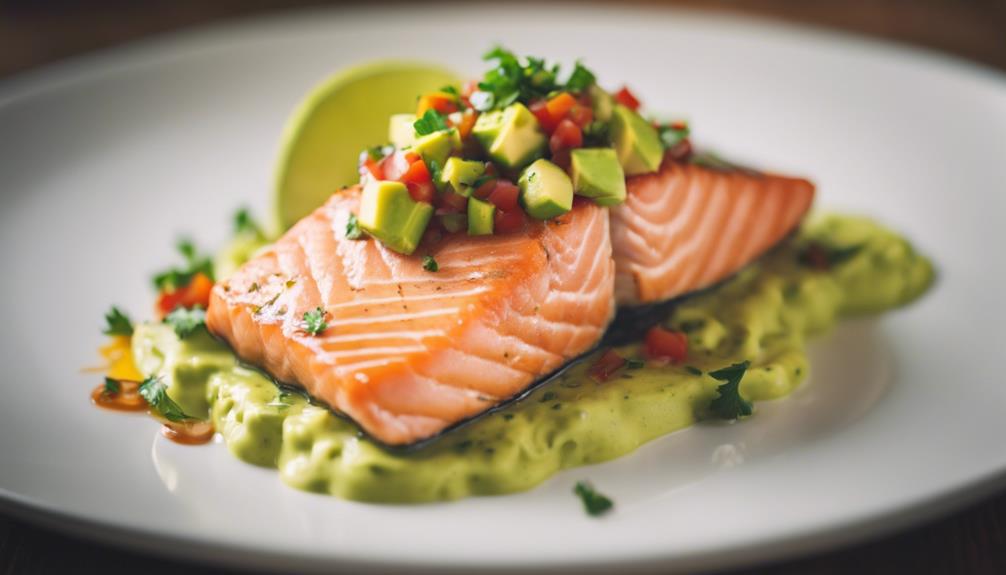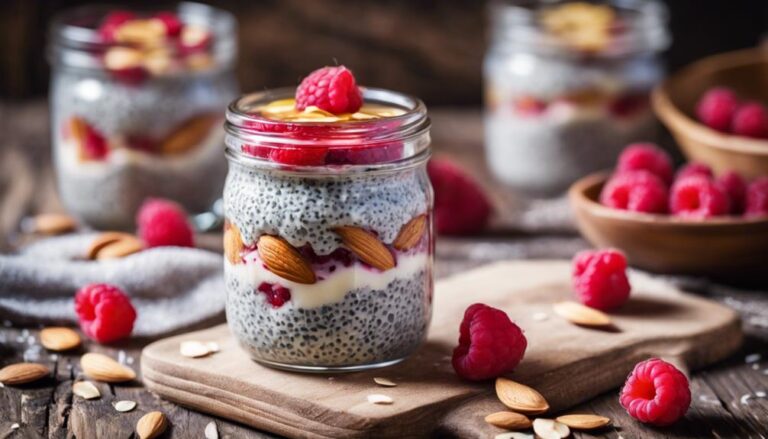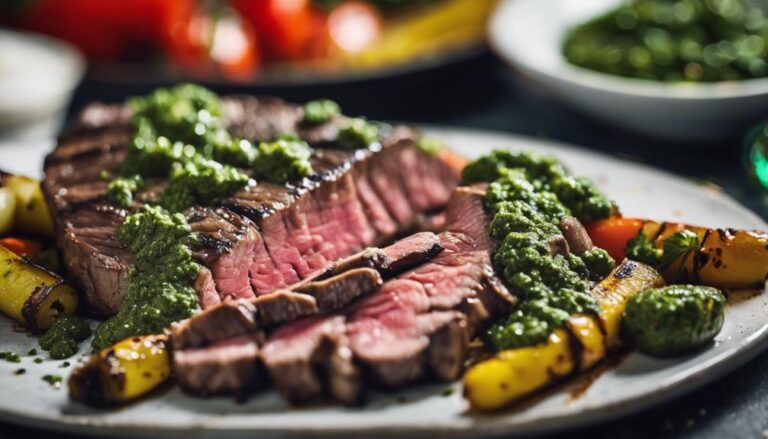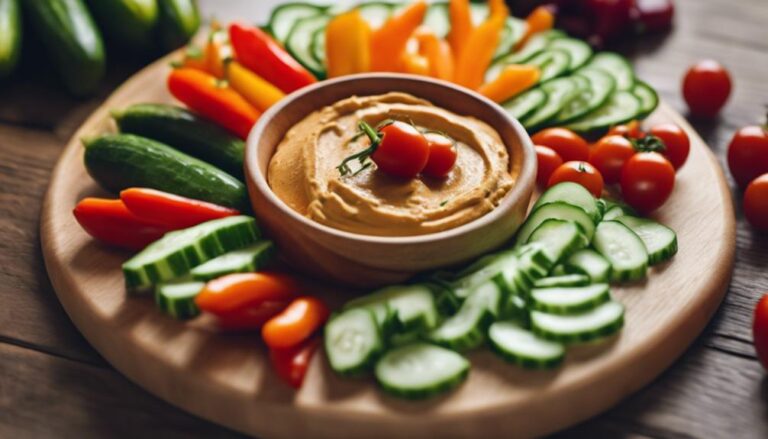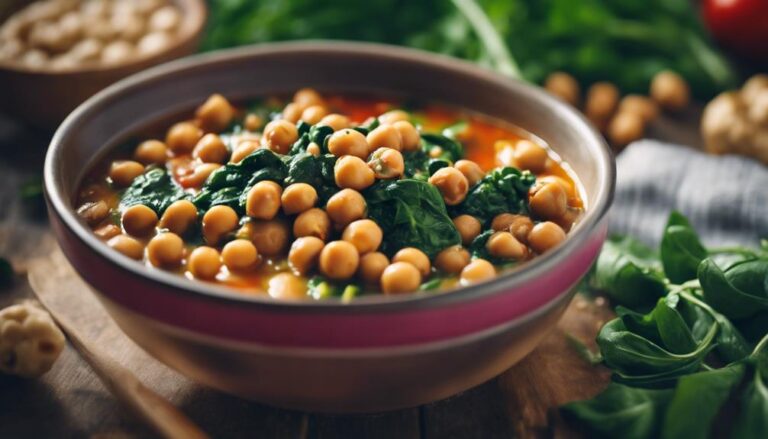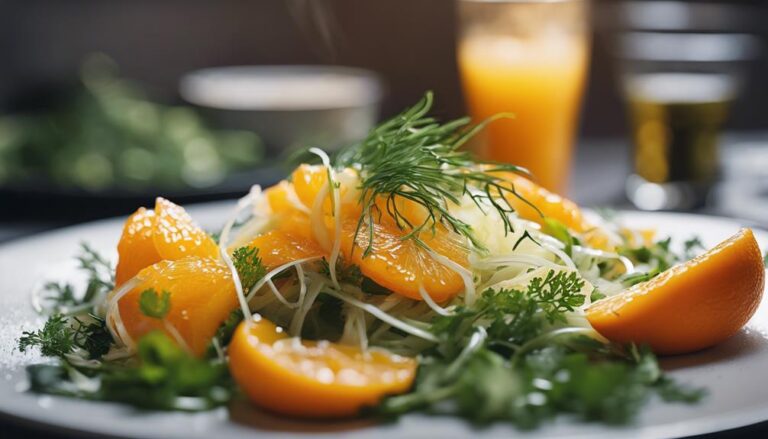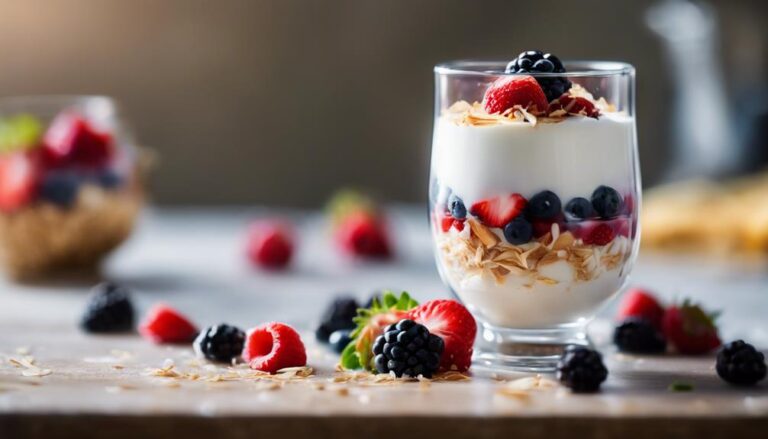Sous Vide Salmon With Avocado Salsa
For a flavorful twist on salmon, try sous vide salmon with avocado salsa. Start by seasoning the salmon and sealing it in a bag. Cook it in a water bath at a precise temperature to maintain moisture and taste. Top it off with creamy avocado salsa and a dash of dill for a fresh finish. The sous vide method guarantees a tender texture and rich flavor. This culinary delight balances the richness of salmon with the vibrant kick of avocado salsa. Discover the perfect harmony of flavors with this simple yet sophisticated dish.
What You Will Learn Here
- Sous vide cooking method ensures moist and tender salmon.
- Avocado salsa adds creamy texture and zesty flavor.
- Precision temperature control for perfect sous vide results.
- Experiment with seasoning blends for personalized taste.
- Garnish with dill for enhanced presentation and aroma.
Salmon's Culinary Evolution
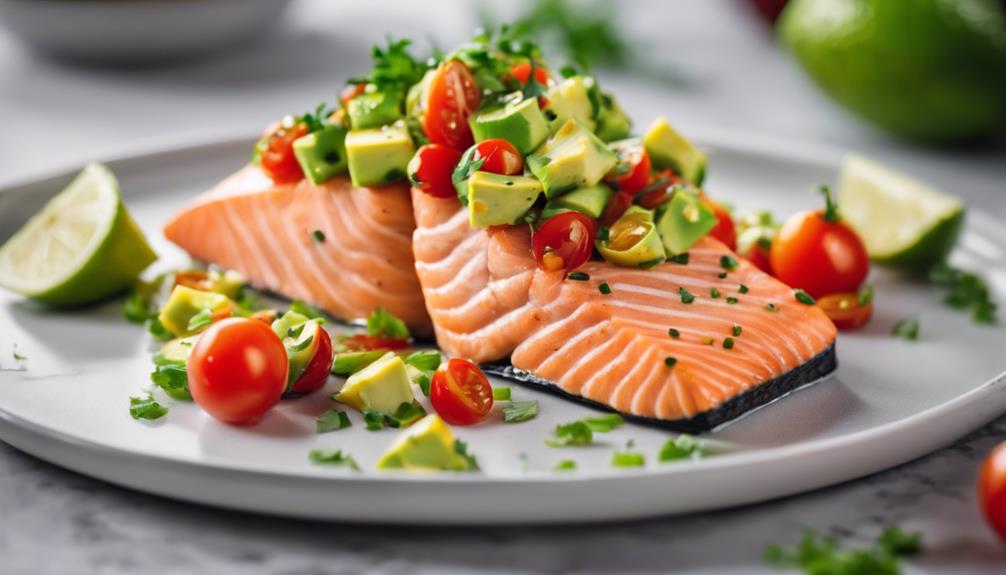
Salmon's culinary journey spans centuries, from its humble origins to the forefront of modern cuisine. Through selective breeding, chefs have refined the fish's taste and texture, enhancing its appeal.
This evolution has led to innovative cooking techniques and flavor pairings that continue to elevate salmon dishes to new heights.
Salmon Breeding History
Through centuries of selective breeding and culinary experimentation, salmon has undergone a remarkable evolution in its gastronomic significance. Salmon breeding history intertwines with salmon conservation efforts and advanced breeding technology to enhance the species for consumption. Over time, salmon aquaculture sustainability has become a focal point, promoting genetic diversity to guarantee the resilience of this prized fish.
Salmon breeding techniques have evolved from basic selection processes to sophisticated methods that optimize desirable traits such as size, taste, and color. This evolution has contributed to the availability of high-quality salmon for culinary purposes, meeting the demands of a growing market. Salmon breeding programs also play an essential role in maintaining genetic diversity, which is vital for the long-term health and adaptability of salmon populations in aquaculture settings.
Modern Cooking Techniques
In the domain of culinary exploration, modern cooking techniques have revolutionized the preparation of salmon, elevating its flavors and textures to new heights. Precision cooking methods like sous vide have become popular choices for cooking salmon due to their ability to guarantee the fish's delicate texture and lock in moisture.
Sous vide, a French term meaning 'under vacuum,' involves sealing the salmon in airtight bags and cooking it in a precisely controlled water bath at a consistent low temperature. This technique guarantees that the salmon is cooked evenly from edge to edge, resulting in a buttery soft texture that traditional cooking methods struggle to achieve.
When it comes to flavor pairing, avocado has emerged as a popular ingredient to complement salmon dishes. The creamy texture and mild flavor of avocado pair beautifully with the rich taste of salmon, creating a harmonious blend of flavors. Chefs experiment with different herbs, spices, and citrus elements to enhance the flavor profiles of both the salmon and avocado, creating a delightful culinary experience that showcases the best of modern cooking techniques.
Flavor Pairing Innovations
Exploring innovative flavor combinations has redefined the culinary landscape for salmon, propelling its evolution into a domain of exciting taste pairings. Salmon's culinary journey has seen the emergence of bold experiments like avocado fusion, where the buttery richness of avocado complements the delicate flavor of the fish, creating a harmonious blend that tantalizes the taste buds. This culinary fusion represents a creative twist that showcases salmon in a new light, appealing to those seeking unique dining experiences.
In addition, salsa pairing has become a popular avenue for taste exploration with salmon. The vibrant mix of fresh tomatoes, onions, cilantro, and lime juice adds a zesty kick to the fish, elevating its natural flavors and providing an invigorating contrast. This innovative approach to salmon preparation highlights the versatility of this beloved seafood, demonstrating its ability to harmonize with a wide range of ingredients to create memorable dishes. By embracing these flavor pairing innovations, salmon continues to evolve, captivating food enthusiasts with its endless culinary possibilities.
Salmon's Key Seasoning
For a flavorful twist on your sous vide salmon, consider incorporating a blend of zesty lemon pepper and aromatic dill as the key seasoning. These two elements come together to create a harmonious balance that enhances the natural flavors of the salmon while adding a revitalizing kick to each bite.
Here are some tips to make the most of this seasoning combination:
- Grind Fresh Lemon Pepper: Using freshly ground lemon pepper will intensify the citrusy notes and elevate the overall taste of the dish.
- Mix Dill with Olive Oil: Combine chopped dill with a drizzle of olive oil to create a fragrant herb-infused oil that can be brushed onto the salmon before cooking.
- Season Generously: Don't be shy with the seasoning; salmon can handle bold flavors, so be sure to coat it generously with the lemon pepper and dill mixture.
- Marinate for Depth: For an even more robust flavor, marinate the salmon in the seasoning blend for a few hours before sous viding.
- Adjust to Taste: Feel free to adjust the seasoning quantities based on your personal preferences to tailor the dish to your liking.
Sous Vide Salmon Variations
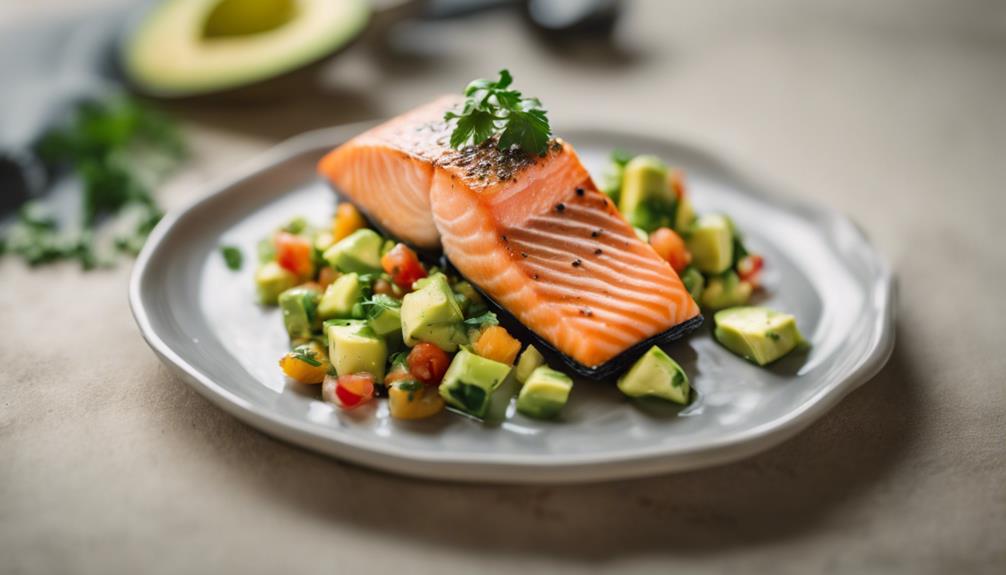
When it comes to sous vide salmon, there are a variety of delicious variations you can try.
Consider experimenting with Sous Vide Salmon Sausage, a unique twist on the classic fish.
If you prefer a smoky flavor, the Smoked Paprika Salmon recipe might be right up your alley.
For a more herbaceous option, you can explore a Dill-Infused Salmon creation.
Sous Vide Salmon Sousage
Have you considered experimenting with different seasoning blends to enhance the flavor profile of your sous vide salmon? When it comes to sous vide salmon variations, trying out new flavors can elevate your dish. Here are some ideas to inspire your next sous vide salmon creation:
- Citrus Herb Blend: Infuse your salmon with a invigorating mix of lemon, dill, and parsley for a vibrant and zesty taste.
- Asian Fusion: Combine soy sauce, ginger, and garlic for a savory umami twist that pairs perfectly with salmon.
- Spicy Cajun: Add some heat with a Cajun spice blend featuring paprika, cayenne pepper, and thyme for a bold flavor kick.
- Mediterranean Magic: Transport your taste buds to the Mediterranean with a blend of oregano, basil, and garlic for a herbaceous delight.
- Smokey Chipotle: Create a smoky and spicy flavor profile by incorporating chipotle powder, smoked paprika, and a touch of honey for balance.
Experimenting with different seasoning blends can offer a delightful array of flavors to enjoy with your sous vide salmon.
Smoked Paprika Salmon Recipe
Consider incorporating smoked paprika into your sous vide salmon recipe for a rich and flavorful twist on this classic dish. Smoked paprika adds a depth of smokiness and a touch of heat that complements the delicate flavor of salmon beautifully.
Here are some ways you can experiment with smoked paprika in your salmon dishes:
- Grilled Salmon: Season your salmon fillets with smoked paprika, salt, and pepper before grilling them to perfection. The smoky flavors from the paprika will infuse the salmon as it cooks over the flames, creating a delicious charred exterior.
- Baked Salmon: For a simple yet tasty dish, coat your salmon in a mixture of smoked paprika, garlic powder, and olive oil before baking it in the oven. The paprika will form a flavorful crust on the salmon, enhancing its natural taste.
Try these methods to elevate your salmon game and impress your taste buds with the wonderful combination of smoked paprika and this versatile fish.
Dill-Infused Salmon Creation
To enhance the flavors of your sous vide salmon, infuse it with the invigorating taste of dill for a culinary masterpiece that will delight your palate. Dill brings a revitalizing and herbal note to the salmon, creating a dish that's both light and flavorful.
Here's how you can create a dill-infused salmon that's sure to impress:
- Prepare the Salmon: Season your salmon fillets with salt, pepper, and a generous amount of freshly chopped dill.
- Vacuum Seal: Place the seasoned salmon in a vacuum-sealed bag to guarantee the dill flavor is fully absorbed during the sous vide cooking process.
- Sous Vide Cooking: Cook the salmon in a water bath at the desired temperature for a moist and perfectly cooked result.
- Dill Garnish: Before serving, sprinkle some additional fresh dill on top of the salmon for an extra burst of flavor.
- Avocado Topping: Serve your dill-infused salmon with a creamy and zesty avocado salsa for a delicious contrast of textures and tastes.
Salmon Searing Techniques
When searing salmon, make sure your pan is at the right temperature for best results.
Control the searing time carefully to achieve the desired level of doneness.
To get that coveted crispy skin, pay close attention to the searing process.
Proper Pan Temperature
For achieving a perfect sear on your salmon, begin by making sure that your pan reaches the optimal temperature. Pan searing is a vital step in enhancing the flavor and texture of your salmon. To master this technique, proper temperature control is key. Heat your pan over medium-high heat and allow it to get hot before adding the salmon. A hot pan ensures that the fish sears quickly, creating a delicious crust while keeping the inside moist and tender.
To check if your pan is ready, you can sprinkle a few drops of water on the surface. If the water droplets sizzle and evaporate almost immediately, your pan is hot enough for searing. Remember, the temperature may vary depending on your stovetop, so adjust accordingly.
Once your pan is hot, add a bit of oil to prevent sticking and carefully place the salmon skin-side down. Sear the salmon for a few minutes on each side until you achieve a golden-brown crust. Proper pan temperature is the foundation for a perfectly seared salmon every time.
Searing Time Control
Achieving the perfect sear on your salmon involves precise timing control during the searing process. When searing salmon, it's vital to pay attention to searing tips and temperature control. The Maillard reaction, which is responsible for that beautiful brown crust, occurs between 280°F to 330°F (138°C to 165°C).
To achieve searing perfection, preheat your pan over medium-high heat for about 3-5 minutes. Use an oil with a high smoke point like avocado oil to prevent burning. Once the pan is hot, gently place the salmon skin-side down and press it lightly to ensure even contact with the pan. Sear the salmon for approximately 2-3 minutes per side, depending on the thickness of the fillet.
Achieving Crispy Skin
To guarantee your salmon skin turns crispy and delicious, start by patting it dry with a paper towel before searing. Achieving that perfect crispy texture on your salmon skin is a combination of the right cooking methods and attention to detail. When searing your salmon, make sure the pan is hot before adding the fish, as this helps in creating a nice sear. Try using a cast-iron skillet for even heat distribution and best results.
Another tip for crispy skin is to cook the salmon skin-side down for the majority of the time. This allows the skin to crisp up nicely while protecting the delicate flesh from overcooking. Avoid moving the salmon around too much while it's cooking to ensure an even and crispy sear.
Final Thoughts

Consider incorporating a sprinkle of fresh herbs on top of the salmon to enhance the dish's flavor profile. This final touch can add a pop of freshness and elevate the overall taste of the sous vide salmon with avocado salsa.
When it comes to avocado benefits, remember that they not only bring a creamy texture to the salsa but also provide healthy fats and a dose of potassium. Experiment with salsa variations by adding ingredients like diced mango or pineapple for a tropical twist or finely chopped jalapeños for a spicy kick.
Sous vide cooking offers advantages such as precise temperature control and excellent flavor retention. By cooking the salmon in a water bath at a consistent low temperature, you secure a perfectly cooked piece of fish every time. The gentle cooking process helps the salmon retain its natural juices and flavors, resulting in a moist and tender final dish.
With the bright and zesty avocado salsa complementing the succulent salmon, this dish is sure to impress your taste buds with its combination of textures and flavors.
Frequently Asked Questions
Can I Use Frozen Salmon for This Recipe?
Yes, you can use frozen salmon for this recipe. When cooking sous vide, it's crucial to thaw the fish thoroughly to guarantee even cooking. While fresh ingredients are preferred, properly thawed frozen salmon can work well.
How Can I Store Leftover Avocado Salsa?
To keep leftover avocado salsa fresh, store it in an airtight container in the fridge. Add a squeeze of lemon or lime to help preserve its color. Enjoy within a day or two for the best taste.
Can I Substitute Salmon With Another Fish?
Sure, you can substitute salmon with other fish like cod or trout. Adjust cooking techniques accordingly for best results. Explore different options to find what suits your taste. Enjoy experimenting with new flavors!
What Type of Salt Works Best for Seasoning Salmon?
For seasoning salmon, Pink Himalayan salt adds a subtle flavor while sea salt enhances natural taste. Kosher salt is great for its coarse texture, and table salt dissolves easily. Experiment with each to find your favorite!
Is It Necessary to Use a Vacuum Sealer for Sous Vide Cooking?
You don't have to use a vacuum sealer for sous vide cooking. Pros include less air exposure and better flavors. Cons involve limited size options. Sealing alternatives like water displacement method or zipper-lock bags work well.
Conclusion
To sum up, sous vide salmon with avocado salsa offers a modern twist on a classic dish, showcasing the versatility of this popular seafood.
By using precise cooking techniques and flavorful seasonings, you can create a tender and delicious meal that will impress your guests.
Whether you prefer a simple preparation or a more complex variation, experimenting with different searing methods can elevate the dish to new heights.
So, give this recipe a try and enjoy a gourmet dining experience at home.
